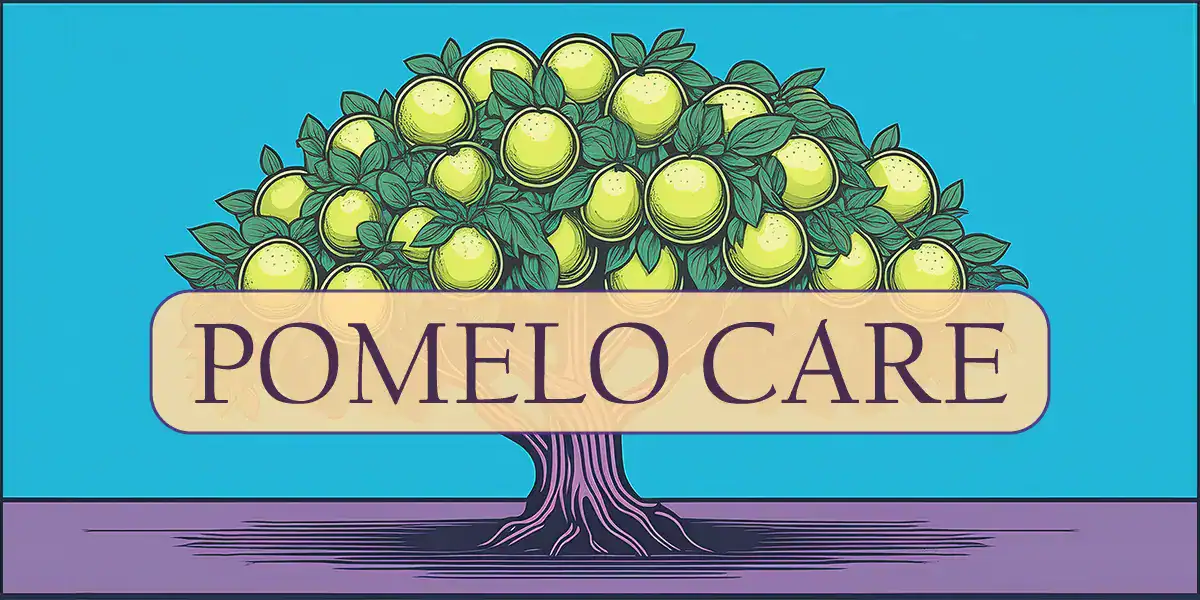Do you have an endless appetite for citrus?
Then consider the pomelo (Citrus maxima), the world’s largest citrus fruit, sometimes as big as a basketball!
Native to Southeast Asia, this grapefruit cousin has thick skin, pale flesh (ranging from yellow to pink), and a less acidic flavor — sweet, mellow, and refreshing with a tropical twist.
The trees flourish in Southern California’s full sun, well-drained soil, and low-frost winters, and the region’s moderate humidity helps prevent issues like fungal growth.
Pomelos vs. Grapefruit
Pomelos may look similar to grapefruit, but here’s where they differ:
- While grapefruits typically weigh 1–2 pounds, pomelos easily reach 4–5 pounds.
- The pomelo’s peel is much thicker, often making up a significant portion of the fruit’s size.
- Pomelos are sweeter and less tangy or bitter than grapefruits.
- Grapefruits are juicier, while pomelos are better for eating fresh, thanks to their firmer segments.
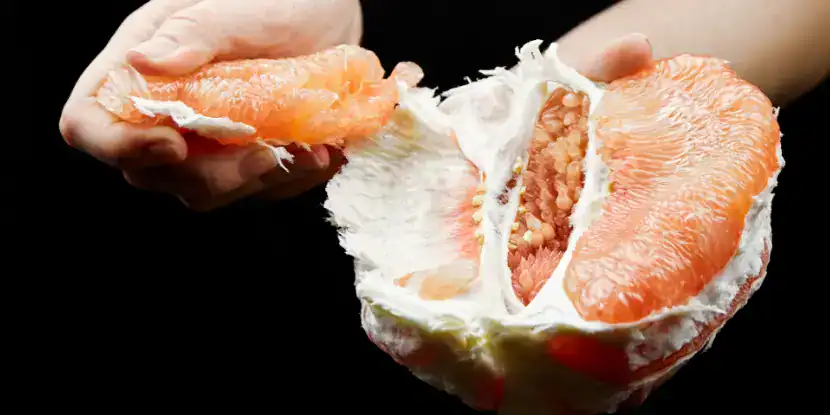
Pomelos should be peeled and eaten in sections.
Why a Pomelo Tree Belongs in Your California Garden
Pomelo trees check all the boxes for a standout centerpiece in your yard:
- A bountiful harvest of impressive, flavorful fruit.
- Evergreen trees with glossy leaves and fragrant blooms.
- Exceptional heat and drought tolerance.
- Easy care and minimal pruning.
Pomelo Tree Mature Size
- Height: Most pomelo trees grow 10–25 feet, depending on pruning and rootstock.
- Spread: Their canopy spreads wide, reaching around 15–20 feet in diameter, providing significant shade.
Popular Pomelo Varieties
- Chandler is large and round with pale pink to reddish flesh. This variety performs well in warm climates and is an excellent choice for fresh eating or juicing.
- Honey Pomelo has an exceptionally sweet and mild flavor. It’s a sought-after variety for desserts, fruit salads, and other culinary uses.
- Tahiti Pomelo is a larger variety with pale yellow skin and a delicate, sweet flavor. Its thick rind is well-suited for preserving or candying.
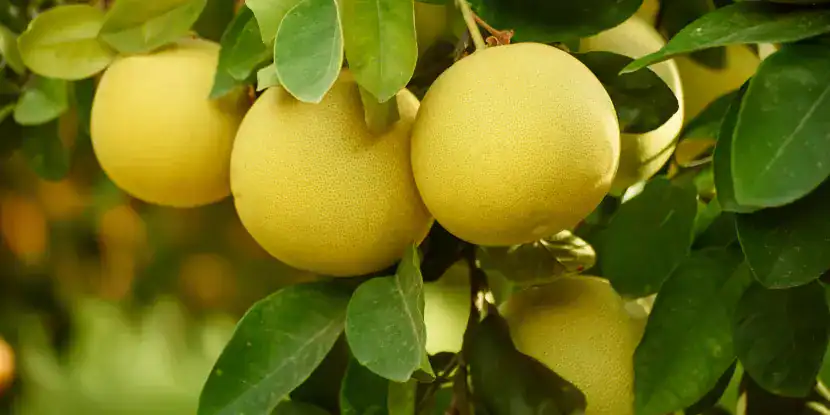
Chandler Pomelos are large and round, with pale pink to reddish flesh.
Optimal Growing Conditions
Light
- Pomelos prosper in full sun, with at least 6–8 hours of sunlight daily.
- Avoid planting in shaded areas or under larger trees.
Temperature
- Pomelos are subtropical, preferring temperatures between 60°F and 85°F.
- While mature trees can tolerate brief dips below freezing, young trees need protection from frost.
Soil
- They grow best in well-draining soil with a pH between 6.0 and 7.0.
- Sandy or loamy soil works well, but avoid heavy clay unless amended for drainage.
Propagating Pomelo Trees
Pomelos are often propagated via grafting to ensure consistent fruit quality. While you can start from seeds, grafted saplings from reputable nurseries offer faster growth and reliable yields.
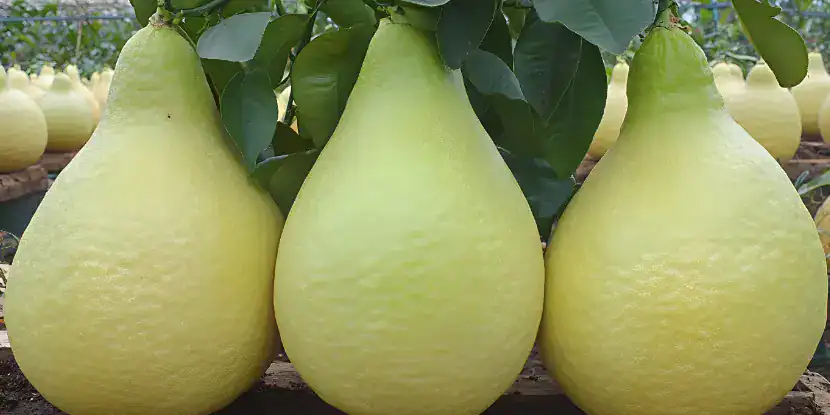
Giant pear-shaped pomelos on the tree.
Steps for Planting
- Select a sunny spot with well-draining soil and enough space for the tree’s mature size.
- Amend your soil with organic matter or compost to improve drainage and nutrients.
- Dig a hole twice as wide and slightly deeper than the tree’s root ball.
- Place the tree in the hole, ensuring the root crown sits just above ground level. Fill the surrounding soil and tamp it down gently.
- Water immediately after planting to settle the soil around the roots.
Pomelo Tree Care
Pollination
Pomelos are self-pollinating, meaning you only need one tree for fruit production. However, having multiple trees nearby can increase yields.
Water
- Deep, infrequent watering is best to encourage healthy roots.
- Water once weekly during the growing season or when the soil feels dry 2–3 inches down.
Fertilizer
- Apply a balanced citrus fertilizer (high in nitrogen) 3–4 times yearly.
- Start feeding in early spring and stop by mid-summer to prevent late growth.
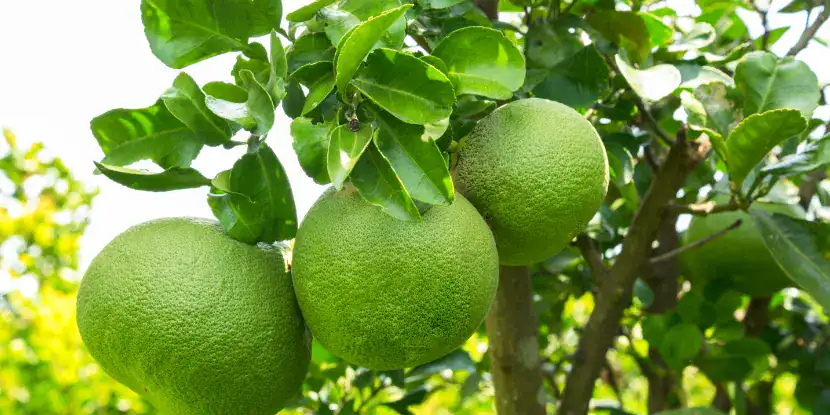
Do not pick! These pomelos are still too green.
Pests & Diseases
- Common Pests: Aphids, spider mites, and citrus leaf miners. Use a horticultural oil spray or natural predators like ladybugs.
- Diseases: Watch for root rot or greasy spot fungus, typically caused by poor drainage or overwatering.
Pruning
- Prune minimally to maintain the tree’s shape and health.
- Remove dead, damaged, or crossing branches in late winter or early spring.
Harvesting Pomelos
Pomelos ripen slowly, often taking 6–8 months from flowering to harvest. Look for these signs of readiness:
- The fruit becomes heavy and aromatic.
- The skin changes from green to pale yellow or golden.
- Test one fruit to confirm sweetness before harvesting the rest. Harvest pomelos with pruning shears to avoid damaging the tree.
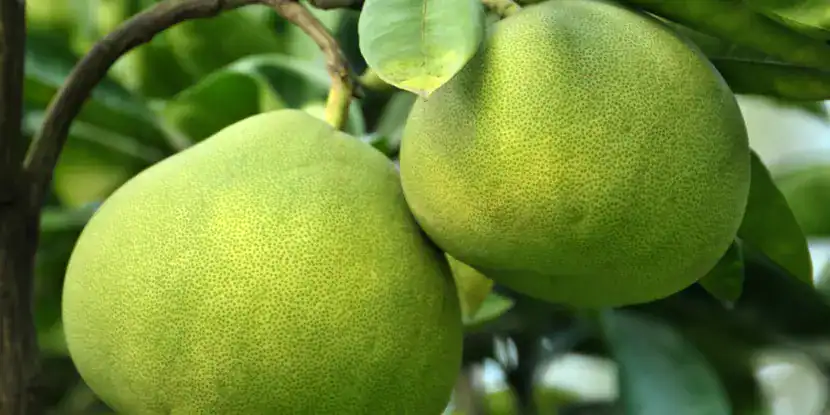
These pomelos are taking on a yellow tinge and will soon be ready for harvest.
FAQs: Growing Pomelos
Q: How long does it take for a pomelo tree to bear fruit?
Grafted trees typically bear fruit within 3–4 years, while seed-grown trees may take up to 8 years.
Q: Can I grow a pomelo tree in a pot?
Yes, but use a large container (at least 20 gallons) and maintain regular pruning.
Q: Do pomelo trees need frequent watering?
Young trees need more frequent watering, while mature trees thrive with deep weekly watering.
Q: How many pomelos will a tree produce?
A healthy tree can yield 50–75 fruits per year once mature.
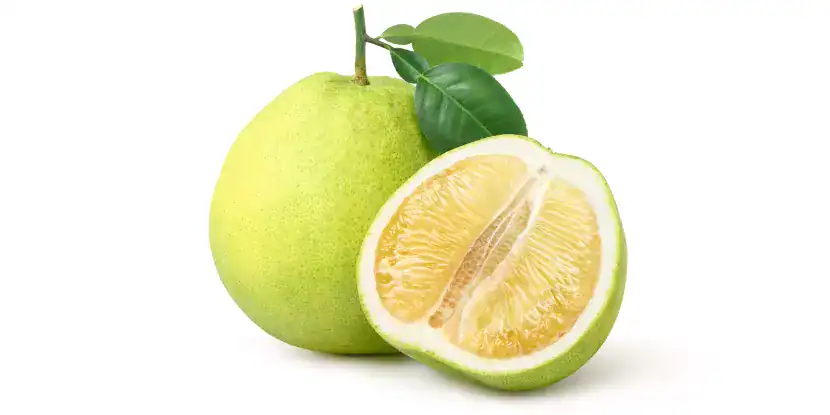
A pomelo is sliced open to reveal its yellow flesh.
Q: Can pomelos survive frost?
Young trees are sensitive to frost, but mature trees can tolerate brief frosts with proper protection.
Q: How do I store harvested pomelos?
Store pomelos at room temperature for up to 2 weeks, or in the refrigerator for 1 month.
Q: Are pomelos seedless?
Most pomelos have seeds, though their number varies by variety.
Q: What are popular pomelo varieties?
Some favorites include Chandler, Honey Pomelo, and Tahiti Pomelo.

